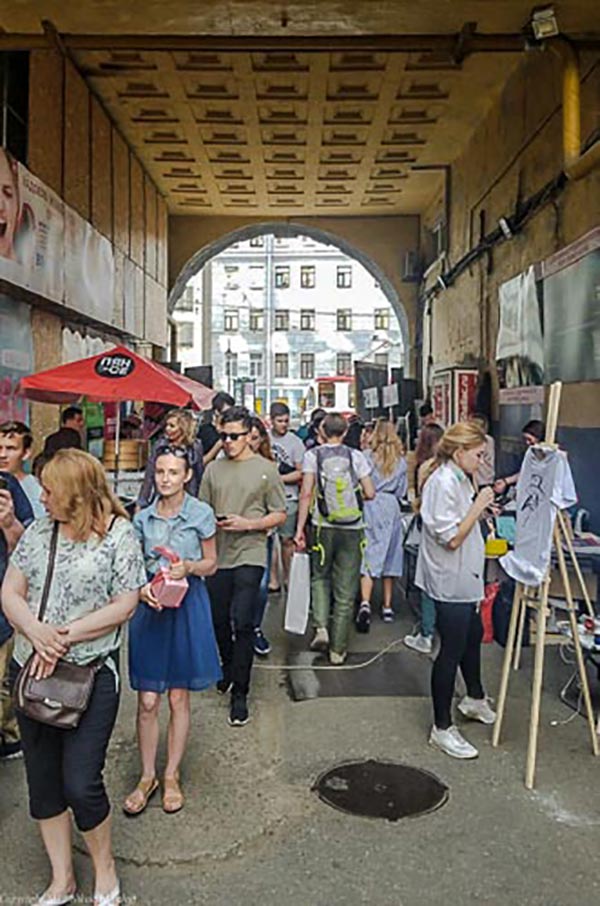
From Hipsters to Feminists to Reformers to Artists and Radicals: Welcome to Kyiv’s Youthful Maidan Generation
Nearly five years after the EuroMaidan revolution convulsed Ukraine, Kyiv’s youthful cultural scene is flourishing. Even in the midst of war and economic turmoil, the city’s creative milieu is booming from fashion to raving to partying to film to theater to outdoor concerts to food events to chic, hipster-like bars and cafes. Reflecting upon Kyiv’s recent makeover, the Guardian remarks, “The scene evokes late 90s Williamsburg, not the capital of a crisis-wracked country at war.” The paper adds, “If the Maidan revolution, which ousted a Russia-friendly regime in February 2014, has largely failed to install the transparent, democratic government its proponents envisioned, it at least appears to have democratized Ukrainian culture.”
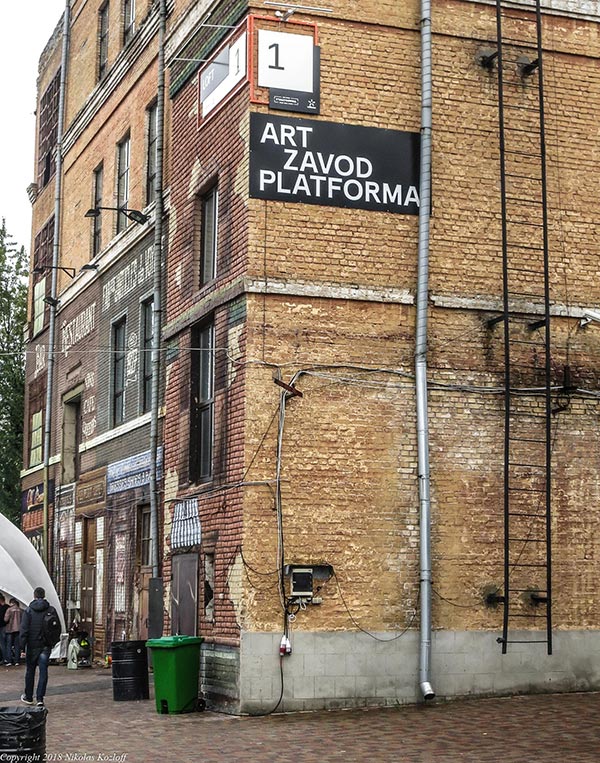
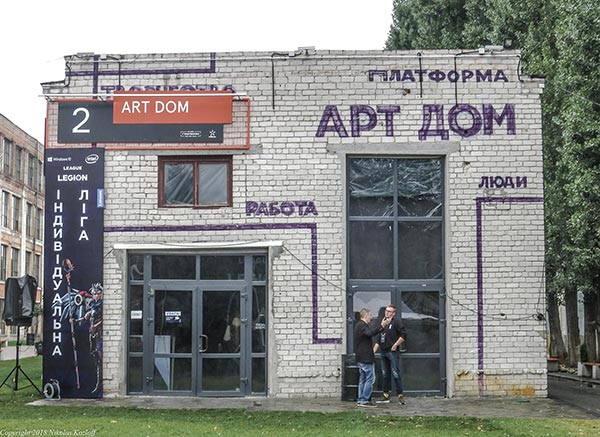
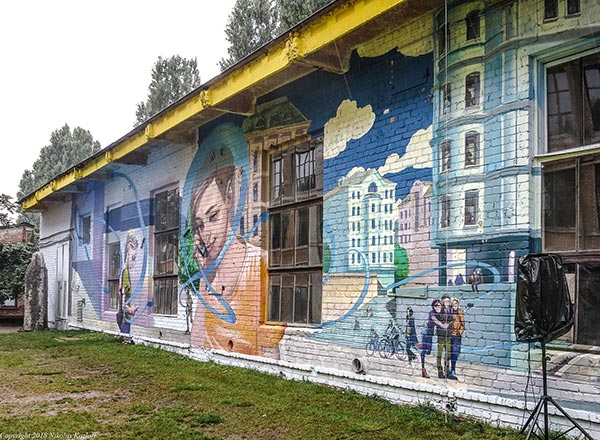
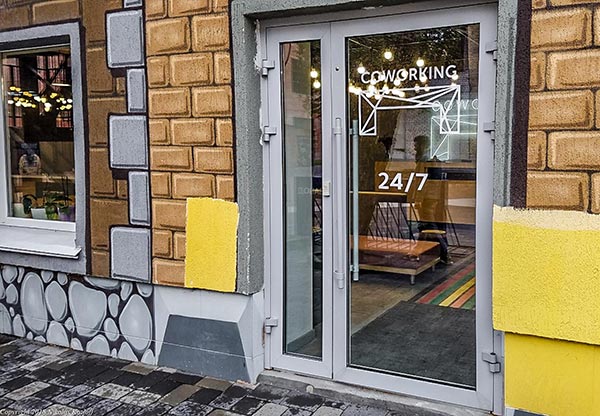
Breaking out of mainstream society, youth has formed a new subculture by turning to illegal partying and raves. Take, for example, CXEMA, a techno rave which organizes three or four events each year. The underground gatherings, which feature techno music and intense light shows, vintage sportswear and “animalistic” dancing, take place in the late hours of mid-morning in vacant office blocks, skate parks, former ship building workshops on the docks and inactive factories. True to form, music evokes the former machine-like drone and sounds of industrial Kyiv. Some of the CXEMA crew is comprised of EuroMaidan veterans, and organizers say raves serve as a means to perpetuate the political community which arose in the midst of revolt against the Yanukovych regime.
In addition to dance, Kyiv sports an underground music scene. Valerie Schiller is a young librarian and associate researcher at the Pinchuk Art Center, which serves as kind of hub for the hipster sub-culture situated around the old Bessarabsky market and downtown. Speaking with Schiller late last year, the librarian told me the music underground tends to attract a leftist crowd with bands performing at small art parties.
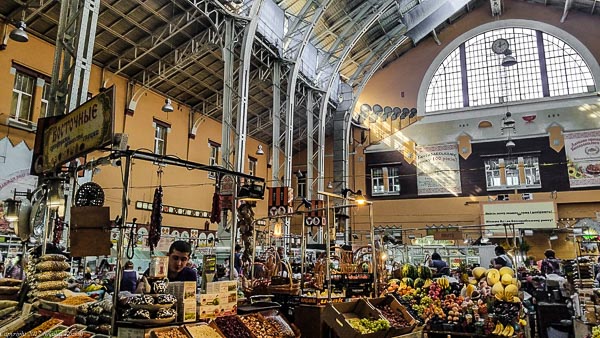
Internationalization of Hipster Culture
Political tumult has also led to some soul searching within the fashion world, and young designers are reconfiguring a unique look for Ukraine featuring pixilated traditional floral prints. Recent theater projects, meanwhile, have brought together Ukrainian youth from all over the country, while documentary film-making is undergoing a boom. Around Kyiv, street art is visible everywhere and the youth crowd flocks to the Pinchuk Art Center not to mention Kyiv biennial. Within her own local art sphere, Schiller remarked, “almost everyone is feminist and sort of leftist.”
At the same time, Kyiv’s eating scene has embraced “a highly democratic approach” in which squatters offer drinks and snacks in downtown. Not only that, but a local festival has become one of Europe’s largest street food events, featuring one hundred vendors and 30,000 visitors who crowd into a huge former silk factory from April to November. The mouth-watering selection features everything from goat burgers to honey vodka. The festival has successfully launched the careers of budding food vendors, from Scandinavian sandwich purveyors to “craft” ice cream producers.
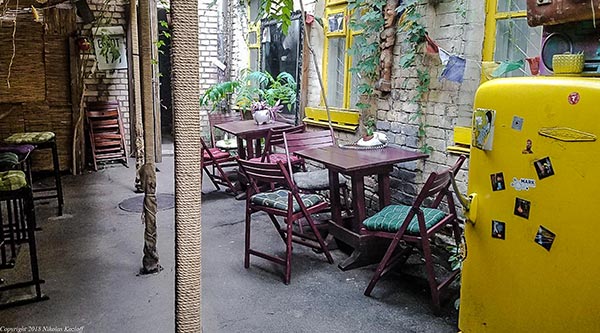
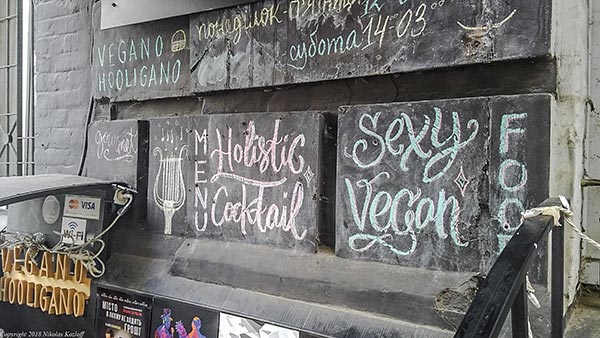
According to young Ukrainian artist Nikita Kadan, public space has been re-organized in such a way as to reflect changing tastes and social mores, to the point that the older generation can sometimes seem almost invisible. Kadan, who is also a member of the Kyiv artist group R.E.P. (Revolutionary Experimental Space), told me that downtown has become a “privileged space” where “most people working in creative industries can’t afford to shop in stores, but they must spend money on their image.” Nevertheless, the artist believes there has been an effort to somehow refashion this part of the city so as to reflect a more youthful and progressive feel. In contrast to supposedly crass, vulgar, throwback and kitschy old school Soviet folk, the new Ukrainian middle class presents itself as more tasteful, more educated and more accepting of modern design.
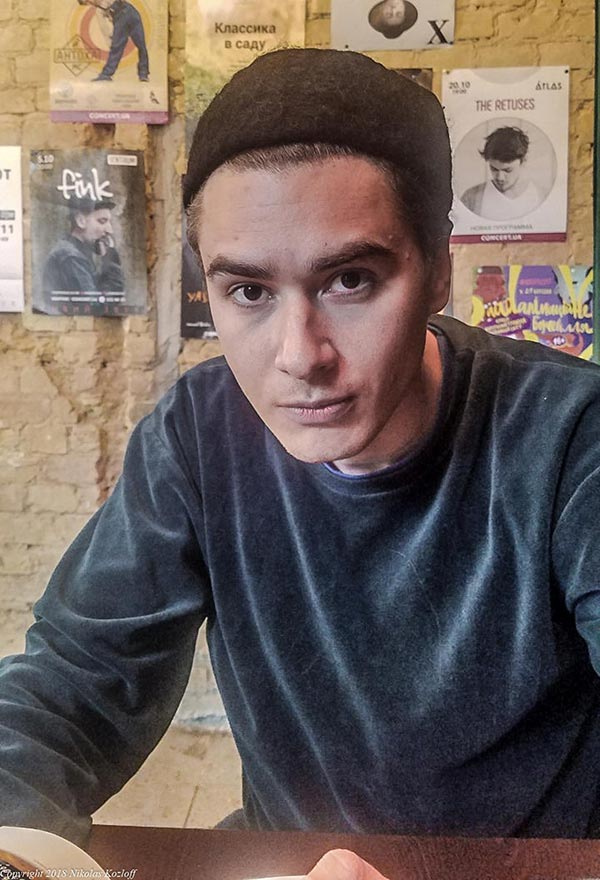
In a sense, Kyiv’s thriving youth culture is not so different from the hipster scene in Russia, or at least that was my impression as I traveled throughout the region this past fall. In St. Petersburg, for example, I saw youth congregating at Etaji, a series of shops which started out as a squatted building. At Ziferblat, which feels more like Brooklyn than Russia, visitors pay by the amount of time they spend in the cafe as opposed to what they eat or drink. In Moscow meanwhile, the former Soviet-era Red October chocolate factory has been turned into a trendy hipster mecca full of restaurants.

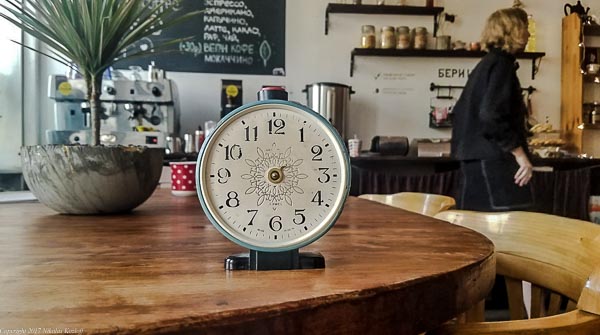
Yalta European Strategy Conference
What’s behind this recent standardization of the hipster scene, and how has the EuroMaidan revolution refashioned cultural norms amongst youth? The Guardian writes that “while some may dismiss the city’s new ferment as just the latest chapter in the globalization of hipster culture, Kiev’s newfound creativity marks a shaking off of the Soviet mindset, a breaking away from a past where new ideas and free thinking occurred only underground.”
Fortunately, I had the opportunity to discuss such issues as a guest to the Yalta European Strategy (YES) conference in Kyiv, a yearly event which is convened by wealthy philanthropist and industrial magnate Viktor Pinchuk, who is also associated with the aforementioned Pinchuk Art Center. YES promotes itself as the main platform for promoting Ukraine’s European future, and both inside and outside the event, I spoke with young folk in an effort to get a handle on the generational divide, Ukrainian politics, as well as gender, social and racial relations.
At one point I caught up with Vladislav Bandrovsky, a young Masters student in law and a YES conference participant. Ukrainian youth, he told me, is “very open to everything, different lifestyles, different points of view, sexual orientation and ethnicity. I have several friends who are gay and this is perfectly fine in university or the workplace.” The student added that while some youth are still very conservative toward gays and bisexuals, they represent the minority and are considered “sort of freaks.”
Bandrovsky, who is in a relationship himself, believed that Ukrainian youth was still pretty traditional as far as gender relations are concerned though perhaps somewhat less traditional than Russia. The young student, who has traveled to Geneva and Rome, reflected on the contrasts between the west and his own country when it comes to personal matters. The main difference, he explained, was that in Ukraine young men may assume more of an assertive role in the initial courtship phase of a relationship.
Young Women
The young lawyer’s comments were hardly surprising to me: having previously spent two and a half months in Russia prior to traveling to Ukraine, I was struck by the great prevalence of flower shops lined up on almost every street corner. In St. Petersburg, some of these shops are even open twenty four hours a day, thus attesting to the traditional nature of gender relations. Though flower sellers aren’t as common on Kyiv’s streets, the vendors throng the city’s metro stations.
Outside the YES conference, I touched on such matters with sociology graduate students at Kyiv Polytechnic University during a roundtable discussion. After the seminar, I met up with Ann Kurovska, a young Masters student who also contributes to the leftist Commons Journal. As we chatted on Maidan square, an elderly woman approached us and asked me if I wanted to purchase some flowers. Later, Kurovska remarked that she was fed up with such traditions, and moreover the flower industry was environmentally wasteful.
In a contrast to my conversation with Bandrovsky, Kurovska declared that even though Ukraine prided itself on being more modern and western than Russia, the two countries were more or less equivalent culturally since Ukrainian women face enormous pressure to get married and are expected to get pregnant and have children at a relatively young age. Perhaps not surprisingly, then, the odds favor men who have more time to pursue their professional careers whereas women don’t hold as many positions of power on campus. In the sociology department at Kyiv Polytechnic, Kurovska said, most lecturers are men and other departments aren’t much different.
In an echo of what Kurovska had said, Schiller declared that Ukraine has a long way to go since men of all ages as well as women hold very patriarchal views. “You can see this quite clearly in everyday life,” she told me. “For example,” she remarked, “my mother always says ‘you need a husband who will buy you a car,’ as opposed to thinking that I can buy this for myself.” It’s not that her mother is trying to make her feel bad, Schiller continued, but it’s very difficult to get rid of such assumptions which are deeply embedded in the fabric of Ukrainian society. Speaking to Schiller, I got the impression that Kyiv with its small feminist scene might represent a bit of a bubble. Indeed, while she was growing up in Crimea, Schiller observed that youth there tended to be quite traditional and conservative on gender relations.
Kyiv’s Young Reformers
On the other hand, some youthful public figures underscore Ukraine’s turn toward a more forward-looking and modern sensibility. Take, for example, Mustafa Nayyem, an MP and anti-corruption campaigner propelled into the limelight by the Maidan revolution. A longtime journalist, Nayyem’s posting on Facebook calling on people to gather on Independence Square was instrumental in launching mass protest which eventually toppled the Viktor Yanukovych regime. The following year, Nayyem was elected to parliament on the electoral list of the Petro Poroshenko Bloc and the young, stylish “hipster-like” politician casts himself as “one of dozens of Euromaidan activists who are trying to pivot from street politics into big politics, where they hope to spearhead reform and turn Ukraine into a prosperous European state.”
In an effort to unite pro-European reformers under one banner, Nayyem helped to launch Democratic Alliance, a party which eschews oligarchic ties and populism, features which are all too common on the Ukrainian political scene. Democratic Alliance, which appeals to young liberal voters, seeks to promote free market ideas and socially tolerant views.
More unusually, Nayyem is a Pashtun who originally hails from Afghanistan. Eager to get Nayyem’s views on race relations in modern Ukraine, I caught up with the reformer at the YES conference. The legislator told me that racism wasn’t a serious issue though to be sure discrimination exists in certain regions. Perhaps, he conceded, there’s a bit of hostility toward Gypsy or Roma people around Odessa and western Ukraine, though the legislator was confident that social problems would never get out of hand. Nayyem related that he personally had never experienced discrimination, adding that the Ukrainian far right is “marginal” and does not represent a significant threat to ethnic minorities.
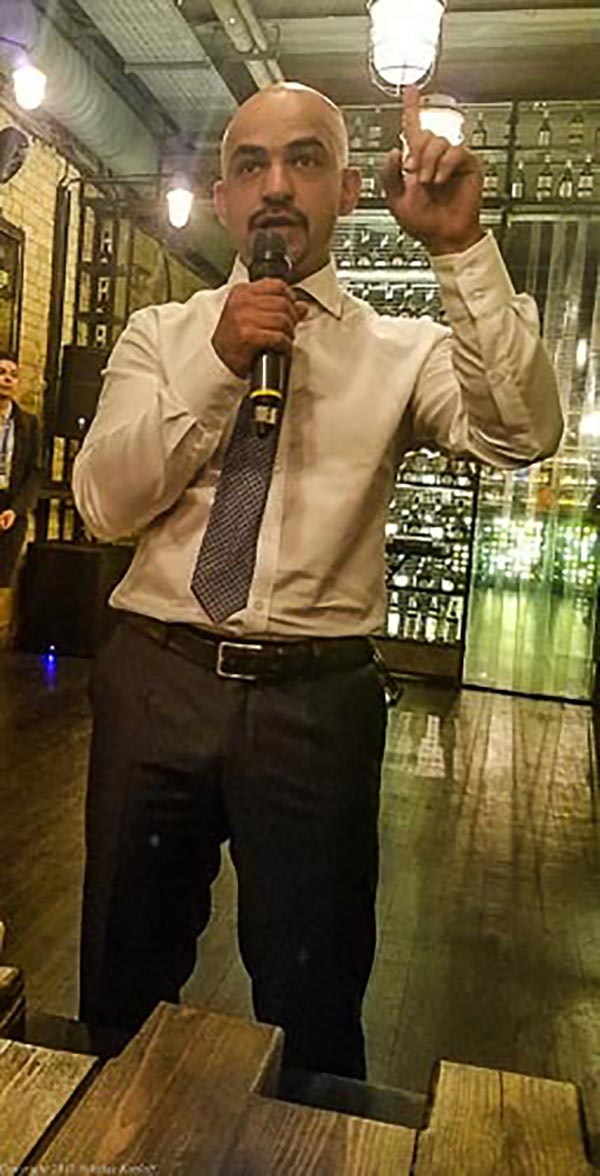
Outside the YES conference, however, some are critical of Maidan’s youthful reformers. Take, for example, Denis Pilash, a post-graduate student at Kyiv National University and a veteran of EuroMaidan political protest. Like Kurovska, Pilash is also associated with Commons Journal and works as an editor at the publication. Speaking to me at my local hotel, Pilash argued that Kyiv’s young politicians should do more than simply adopt the trappings of western society and socially liberal views. “They are very oriented toward simply bringing more markets and mixing this with freedom and democracy,” he told me. “They don’t care how this will affect people in poverty or those out in the countryside,” he added.
Ukraine’s “Youth Leaders”
Back inside the YES conference, so-called “youth leaders” provided a slight contrast to the likes of Kurovska and Pilash. Since 2008, the Pinchuk foundation has selected one hundred Ukrainian students and young professionals to attend the so-called “Young Leaders Section” at its annual YES conference. Those young folk who make the cut are explicitly selected for their “leadership potential,” and receive prized access to world leaders in politics and business. Pinchuk has exhorted students to toss their hats into the political arena, and the magnate’s foundation explicitly seeks to “empower future generations to become the change makers of tomorrow.” Previous speakers to the Young Leaders Section have included a strange mixture of figures including Ukrainian president Petro Poroshenko, Tony Blair, Karl Rove and, most incongruously, Kevin Spacey who is hardly the best role model for youth.
In certain respects, youth attending the YES conference embodied EuroMaidan’s pro-western political tilt. On the margins of the gathering, I caught up with Ivan Shmelov, a young software engineer from the city of Dnepropetrovsk. Shmelov told me he wanted to improve his skills while collaborating with folks “who are on the same wavelength as me.” Specifically, Shmelov had made some valuable contacts which, he hoped, might help him advance future projects involving solar energy and thereby overcome counter-productive Ukrainian prejudices toward green, sustainable energy. Energetic and enthusiastic, the young man added, “We have grown up from childhood thinking that we are the future, we will one day control this country and therefore we are the main key to success. Why should we wait for something? EuroMaidan demonstrated that if we want to change something, we must do it on our own.”
Shmelov’s colleague Vlad Bandrovsky also seemed to agree with many of the underlying themes at the YES conference. A native of the central region of Zaporohizia, Bandrovsky had come to Kyiv as part of Pinchuk’s Young Leaders panel and was interested in the anti-corruption agenda taken up at the confab. When I asked him whether he thought the government was doing a sufficient job curbing corruption, Bandrovsky said he was willing to give his president the benefit of the doubt. “You can criticize him,” the young law student remarked, “but I support him…he is a one hundred percent pro-western president and at this point he is the best option for Ukraine.” Nearly five years after Euromaidan protests, youth drawn to the Pinchuk conference still pin their hopes on European integration. When I asked Bandrovsky whether the younger generation looked toward the West as a positive cultural and political model, the law student declared that many seek to travel and study abroad and later bring back forward-looking ideas, including progressive notions on human rights.
Outside the YES conference, however, Pilash expressed some criticisms of the gathering as well as Pinchuk’s efforts to organize youth. “The concept of ‘youth leader,’” he said, “presumes there are young wolves intent on pursuing this capitalist rush for more money and power. We don’t need young leaders but rather more youth engagement as a whole. It’s really about having a more horizontal and grass-roots movement or promoting student movements, as opposed to creating some kind of future bureaucrats or minor oligarchs.”
Youth Leaders and “Decentralization”
Evidently, Pinchuk is interested in sharing and spreading his own vision of Ukraine’s political and economic future with the nation’s up and coming youth generation. In line with such thinking, YES organized separate “Ukrainian Regional Civil Servants and Young Leaders Sections” during the conference in an effort to “deepen European integration.” During workshops, participants gained coveted access to “international expertise, enabling them to broaden their horizons and build a wide network of professional contacts.”
Somewhat more controversially, the YES conference hopes to imbue young leaders with the need to impose so-called “decentralization” reforms which have led to social conflict in recent years. The decentralization agenda provides local bodies with more leeway to finance and carry out their own health care, education and public works. Reforms are backed by the likes of the U.S. Agency for International Development or USAID, which is intent upon rolling back ostensibly ineffective bureaucracy and“the governance tradition of the Soviet era.” The apparent model for Ukraine’s decentralization is Poland, which implemented similar reforms after Communism.
Critics charge that Kyiv’s decentralization reforms raise financial strain on outlying regions which are forced to cover the cost of basic education and healthcare. Pilash was critical of Ukraine’s Ministry of Finance, which has implemented so-called neo-liberal economic reforms popular within the International Monetary Fund and World Bank. In 2016, he and other political activists opposed I.M.F. austerity and budget cuts, while supporting a hunger march which proceeded from the town of Romny all the way to Kyiv, a substantial distance of 240 miles.
According to Pilash, local residents in Romny were incensed because their hospital was closed down due to an austerity policy which was euphemistically promoted as “decentralization.” “In actuality, however, the policy has resulted in the closing of many schools and hospitals which are no longer funded by the state but rather must rely on the municipal authorities,” the activist remarked, adding ruefully that “the latter has no funding, so health and education winds up getting shut down entirely.”
Ukrainian Youth as a Whole
While it would be an exaggeration to claim that Kyiv’s youth scene, encompassing everything from hipster raves to underground music to fashion to food is explicitly political, nevertheless the city’s cultural milieu has undoubtedly fed off the energy and dynamic ferment springing from the EuroMaidan revolution. To be sure, Pinchuk’s Youth Leaders summit cultivates more technocratically oriented youth, though Kyiv’s alternative youth scene from leftist politics to feminists to the arts may stand out more to the outside observer.
The question, however, is whether Kyiv’s youth scene is really representative of the country as a whole. Recent polling suggests otherwise, indicating that Ukrainian youth is just as traditional and conservative as wider society and places its trust in institutions like the church, army and police. While a rather thin majority backs the idea of membership in the European Union, just a third favors membership in NATO. Even more dramatically, youth support for both the E.U. and NATO is significantly lower in the south and east than in other parts of the country. In a stinging rebuke to European Union elites in Brussels, a whopping 44 percent of Ukrainian youth says homosexuality “can never be justified.”
Further reporting does not reveal such a flattering picture of Ukrainian youth, with a majority feeling apathetic toward politics and only a miniscule three percent reporting that they had participated in a demonstration or online political activities. Needless to say, such findings are hardly encouraging for the prospect of enhancing let alone consolidating Ukraine’s post-Maidan reform agenda. In a further worrying sign for the government, almost fifty percent of youth lacks trust in politicians and a third feels completely disempowered and devoid of influence over the political process. Such statistics reinforce the notion that Kyiv’s alternative youth scene, such as it is, may represent a small bubble and a minority within the wider scope of Ukrainian politics.

Leave a comment